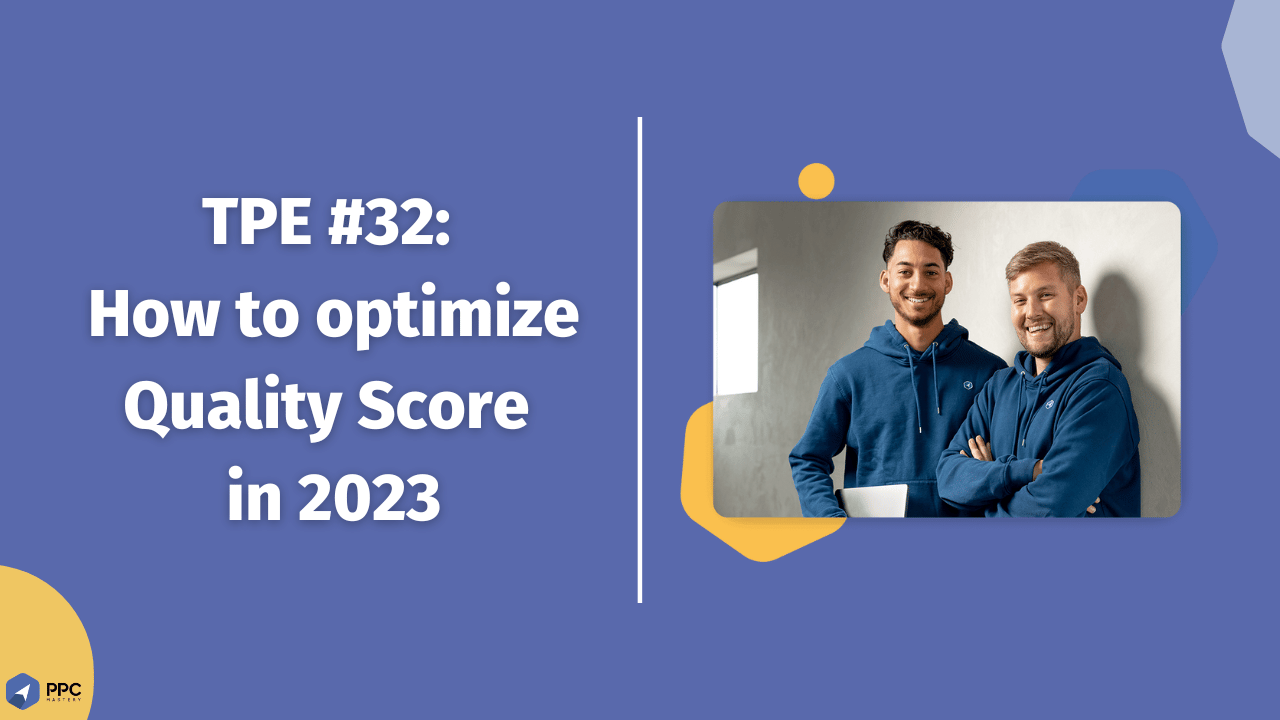
TPE #32: how to optimize Quality Score in 2023
Mar 06, 2023Read time: 2 minutes
Happy Monday!
Over the past few years, Google Ads has become increasingly complex. Machine learning, algorithms and automation can make it hard to optimize campaigns.
Every now and then, it’s important to go back to the basics, so that’s what we’ll do in this issue of The PPC Edge. Today, we’ll give concrete tips on how to optimize Quality Score (one of the oldest and most important optimizations to improve the performance and efficiency of your campaigns).
Let’s dive right in!
Why Quality Score still matters
Quality Score is a diagnostic tool that gives you insights on how the quality of your ads compare to those of your competitors. Ultimately, they impact whether your ad is eligible to enter an auction, how much you pay per click, and how your ad is displayed (with specific assets like sitelinks etc.).
The higher your Quality Score, the better the quality of your ads (based on Google’s rating system), and therefore the higher the chances of getting good performance.
Quality Score shouldn’t be a key metric to look at and optimize at all costs, but rather give a signal of the overall quality of your ads compared to competitors.
How it’s calculated
Let’s take away a few misconceptions about Quality Score by looking at how it’s calculated based on 3 components:
- Ad Relevance: how closely your ad matches to what your customers are looking for.
- Expected CTR: how likely it is that your ad will be clicked when shown.
- Landing Page Experience: how relevant your landing page is for the ad someone clicked on.
Each component is rated as “Above average,” “Average,” or “Below average. (and is based on a comparison with other advertisers whose ads showed for the exact same keyword, over the last 90 days).
If any of the components get rated as “Below average” or “Average”, you know where to optimize.
How to optimize Ad Relevance
The most important thing is to make sure your ad is closely related to the keywords in your ad groups. Some tips to optimize Ad Relevance:
- Create relevant ad copy: include keywords in your ad copy, including the headlines and descriptions.
- Group keywords into tightly themed ad groups: create ad groups based on related keywords.
- Test dynamic keyword insertion (DKI): DKI allows you to dynamically insert the keyword into your ad copy, making it more relevant.
- Test the pinning vs unpinning of headlines with the keyword.
It’s as simple as that: just make sure your ad is relevant to the keyword that triggered it.
How to optimize Landing Page Experience
Ensure that your landing page is optimized for the user's search intent and is relevant to the keywords used in the ad. Some tips to optimize Landing Page Experience:
- Ensure that the landing page is relevant to the ad copy and the user's search intent (show them exactly what they’re looking for).
- Use clear and concise headlines, subheadings, and body copy to convey the value proposition and benefits of your product or service.
- Optimize page speed (pro tip: compress all images!).
- Make sure your landing page is mobile-friendly and responsive to different screen sizes.
- Include a clear CTA that is consistent with the ad copy and the user's search intent.
- Test different landing pages. Seeing high bounce rates? This could indicate users are not finding what they’re looking for.
This one is also simple: just make sure your customers can easily find what they’re looking for.
How to optimize Expected CTR
This one is a bit harder to optimize because it tells you the likelihood of getting a click based on historical data that isn’t as easy to pinpoint as Ad Relevance or Landing Page Experience. However, here are some tips to optimize Expected CTR:
- Test different unique value propositions in your ads.
- Optimize your ads by matching it to the intent of the user.
- Test different ad assets (extensions).
- Experiment with different USPs and CTAs that match to your landing page.
- Use psychological buying triggers like urgency, scarcity and social proof.
How to optimize Expected CTR is basically an extensions of how you optimize Ad Relevance.
Final notes
And that’s how you optimize Quality Scores in 2023!
10/10 ratings are nice, but not a goal you should pursue blindly. Use low Quality Scores as indications of where to optimize, not as the holy grail to evaluate results on.
Always look at your ad quality holistically and judge performance based on a combination of click and conversion based metrics such as Conversions Per Impressions or Revenue Per Impressions (check out this guide for a deep dive on this topic if you’re interested).
Oh and you can use this script from Adsscripts to track your Quality Scores over time. If there are any issues with the script, ask them - not us :-).
Alright, that’s all for today. See you again next week!
Cheers,
Bob & Miles


